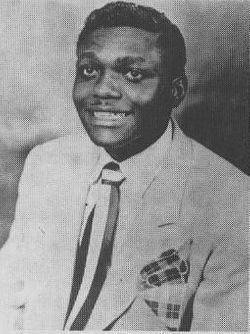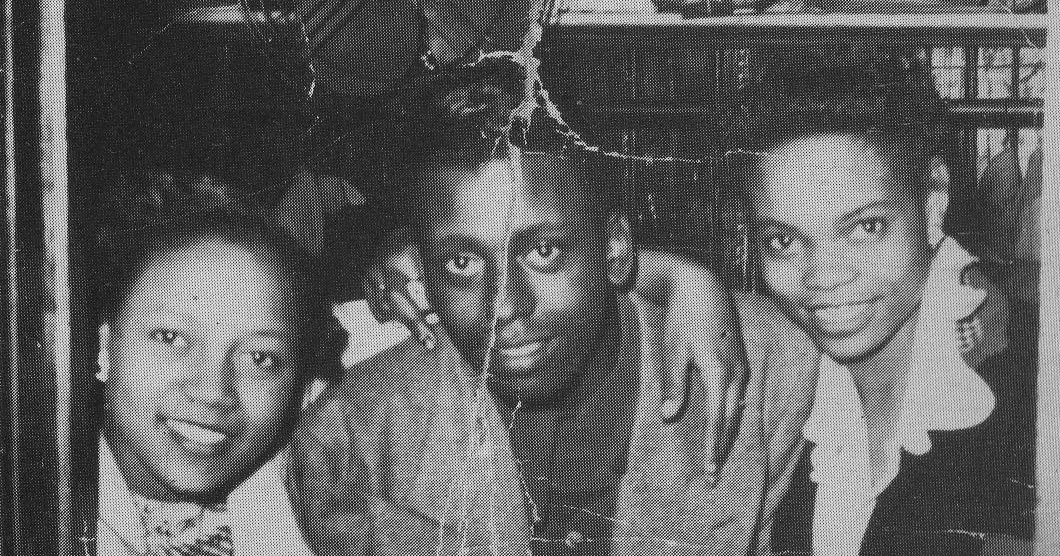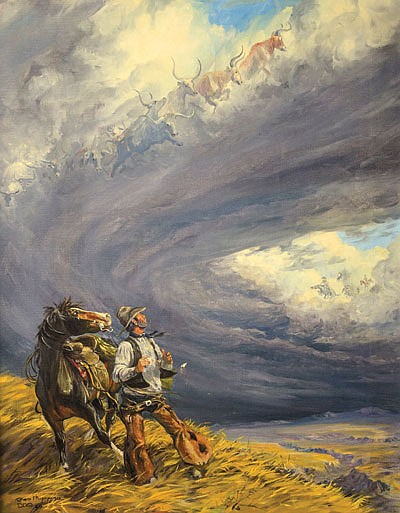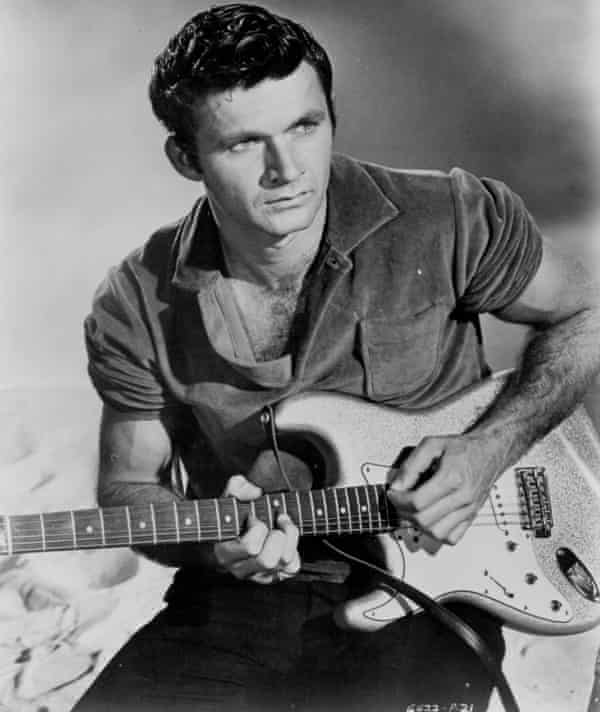First, Rock & Roll was neither “new,” nor indeed even a single musical style;
Second, the Rock & Roll era does not mark the first time that music was written specifically to appeal to young people;
Third, Rock & Roll was certainly not the first American music to fuse black and white popular styles.
 |
| Jackie Breston |
=================================
Rock & Roll Stylistic Finger Prints:
- Instrumentation includes – male vocals, backing vocals, electric guitars, double bass, drums, piano, harmonica, saxophone and other brass
- Fast Tempo – 140bpm or faster Energetic delivery of vocals (screaming and shouting)
- Often based on 12-bar chord structure
- Predominantly uses major keys but with blues scale for vocals, lead parts and solos
- Strong back beat on beats 2 and 4
- Often uses a shuffle rhythm – slightly swung quavers
- Walking bass line, four to a bar, often based on ascending and descending patterns of root-3rd-5th-6th-flat 7th-6th-5th-3rd
- Quite often this line is doubled by electric guitar Second guitar plays rhythmic patterns of chords – use of 6th and 7th extensions of chords
- Use of “stop time” where instruments play only on beat 1 then leave space for vocals or instruments
- Use of flamboyant guitar solos
- Call and response – often between vocal and guitar
Music
- "Boogie in the Park" by Joe Hill Louis, recorded in July 1950 and released in August 1950,
- featured Louis as a one-man band performing "one of the loudest, most overdriven, and distorted guitar stomps ever recorded" while playing on a rudimentary drum kit at the same time. It was the only record released on Sam Phillips' early Phillips label before founding Sun Records.[82] Louis' electric guitar work is also considered a distant ancestor of heavy metal music.[83]
- "Hot Rod Race" recorded by Arkie Shibley and His Mountain Dew Boys in late 1950,
- another early example of "rockabilly", highlighted the role of fast cars in teen culture.[51]
- "Sixty Minute Man" by the Dominoes, recorded on December 30, 1950,
- was the first (and most sexually explicit) big R&B hit to cross over to the pop charts. The group featured the gospel-style lead vocals of Clyde McPhatter (though not on this song), and appeared at many of Alan Freed's early shows. McPhatter later became lead singer of the Drifters, and then a solo star.
- "Rocket 88" by Jackie Brenston and his Delta Cats
- (actually Ike Turner and the Kings of Rhythm) (1951), and
- Bill Haley and the Saddlemen (1951)
- Played with too much restraint compared to Breston and Ike
- "How Many More Years" recorded by Howlin' Wolf in May 1951.
- Robert Palmer has cited it as the first record to feature a distorted power chord, played by Willie Johnson on the electric guitar
- "Rock and Roll Blues" by Anita O'Day recorded on January 22, 1952.
- One of Anita O'Day's few compositions, she was one of the best jazz singers ever, and recorded this blues single on Mercury Records with her own orchestra.
- "Hound Dog" by Willie Mae "Big Mama" Thornton was recorded on August 13, 1952.
- A raucous R&B song recorded with Johnny Otis' band (uncredited for contractual reasons), it was written by white teenagers Jerry Leiber and Mike Stoller, covered three years later by Freddie Bell and the Bellboys (Teen Records 101), and then more famously by Elvis Presley.
- "Crazy Man, Crazy", (1953) Bill Haley and his Comets,
- first rock and roll record on Billboard magazine chart.
- Not a cover, but an original.
- Haley said he heard the phrase at high-school dances his band was playing.
- "Love My Baby" and "Mystery Train" were recorded by Junior Parker with his electric blues band, the Blue Flames in 1953,
- "contributing a pair of future rockabilly standards" that later would be covered by Hayden Thompson and Elvis Presley, respectively
- For Presley's version of "Mystery Train", Scotty Moore also borrowed the guitar riff from Parker's "Love My Baby",[87] played by Pat Hare
- "Gee" by the Crows was recorded on February 10, 1953.
- This was a big hit in 1954, and is credited by rock n' roll authority, Jay Warner, as being "the first rock n' roll hit by a rock and roll group"
- "Mess Around" by Ray Charles was recorded in May 1953,
- one of his earliest hits.
- some lyrics riffing off of the 1929 classic "Pinetop's Boogie Woogie".
- "Rock Around the Clock", (1954) by Bill Haley and his Comets,
- first number 1 rock and roll record It stayed in the Top 100 for a then-record 38 weeks.
- The song itself had first been recorded in late 1953 by Sonny Dae & His Knights, a novelty group whose recording had become a modest local hit at the time Haley recorded his version.
- "Shake, Rattle and Roll", (1954) by Big Joe Turner, Bill Haley and his Comets, and Elvis Presley.
- Haley's version was the first international hit rock and roll record, actually predating the success of "Rock Around the Clock" by several months, though it was recorded later.as sung by Big Joe Turner is ranked number 127 on the Rolling Stone magazine's list of The 500 Greatest Songs of All Time.
- James Cotton's "Cotton Crop Blues" and Pat Hare's "I'm Gonna Murder My Baby" (both recorded in May 1954),
- were electric blues records which feature heavily distorted, power chord-driven electric guitar solos by Pat Hare
- Anticipate elements of heavy metal music.
- heavily distorted guitar sound by Hare that resembles the "distorted tones favoured by modern rock players.
- "That's All Right (Mama)", (1954) by Elvis Presley;
- this cover of Arthur Crudup's tune was Elvis' first single,
- is possibly the song most often cited (albeit inaccurately) as the first rock and roll record.
- "Sh-boom" (1954) by the Chords and the Crewcuts, in this case, the latter was a pale imitation.
- On most informed lists of rock & roll villains, the Crew Cuts would have to rank near the top. They weren't rock & rollers in the first place: their clean-cut white harmony glee club approach was really in the style of early and mid-'50s groups such as the Four Aces, the Four Lads, and the Four Freshmen.
- The Canadian quartet differed from those acts, however, in their concentration upon covers of songs originally recorded by R&B/doo wop vocal groups.
- considered a pioneer of the doo-wop variant.
- "Maybellene", (1955) by Chuck Berry
- adapted in part from the Western swing fiddle tune "Ida Red".
- recorded by Bob Wills and his Texas Playboys in 1938
- The record was an early instance of the complete rock and roll package:
-
youthful subject matter;
-
a small, guitar-driven combo;
-
clear diction; and
-
an atmosphere of unrelenting excitement.
"Rocket 88" is cited for its forceful backbeat and unrefined, distorted electric guitar. By contrast, writer and musician Michael Campbell wrote that, "from our perspective," it was not the first rock and roll record because it had a shuffle beat rather than the rock rhythm originally characteristic in Chuck Berry's and Little Richard's songs, although he added that "Rocket 88" had basic characteristics of rock music such as the emphasis on guitar and distortion.
The First Rock & Roll Song

Origins of "Riders in the Sky"

In this episode we take a look at the history of one of the most widely post WWII, "Covered" popular songs in the ASCAP publishing database.
From its humble beginnings as a European folk song to its re-appearance during the American Civil War asa melody for a drinking song, to its eventual use as she basis for a song about a cautionary tale warning a cowboy that if he doesn't change his ways, who will one day join the damned cowboys doomed to try to “catch the Devil”s herd across these endless skies.
Music Videos
While not an official video production from the estate of Marty Robbins, I really do think that this visual interpretation captures some the essence regarding "Riders in the Sky"
From a September 1990 episode of the CBS Television show "Hee Haw". Glen Campbell & Roy Clark play "Ghost Riders in the Sky", with some help from Jeff Dayton. Glen & Roy's version of this song is on the soundtrack album for the 1985 movie "Uphill All the Way", available at finer retailers everywhere!
This is 1961... (Restored footage). Levang was hired as a temporary guitar and banjo player on The Lawrence Welk Show when Buddy Merrill left to serve in the United States Army. Welk was so pleased with his ability that he hired Levang on a permanent basis when Buddy completed his tour of duty in 1961. Levang stayed with the Welk Band until its final show in 1982.
That same year, at the Country Music Association Awards he was nominated for best artist on a specialty instrument, the mandolin.
He was also an accomplished studio musician, playing on several records for artists such as Glen Campbell, Frank Zappa, Bobby Darin, Bobbi Gentry, David Clayton Thomas, Neal Hefti ("Batman Theme"), Elvis Presley, Dean Martin, Neil Diamond and Noel Boggs. Levang died in Canyon Country, California at the age of 83.
The ill fated reboot of the Blues Brothers movie franchise in the late 1990s tried to recapture the romance and legitimacy of the original film by relying on trade and true musical icons such as "Riders in the Sky".
Filmed in Toronto, Ontario Canada, most of which was shot in the Cherry Street area of Toronto in what is now the "Distillery District". The timing was right and so were the surroundings. The area had been a staging ground and ancillary storage and processing to the nearby Docklands south of Lakeshore Drive.
I watched the movie filming evolve on a daily basis during 1996/1997 as I drove Cherry St. Daily on my way to work. Sets going up and then controlled destruction of the concert hall included in this clip.
One of the first appearances of "Riders in the Sky" came during a 1949 episode of the movie by the same name. Singing Cowboy Gene Autry sings the Western Classic song "Ghost Riders in the Sky" from his movie "Riders in the Sky" from Columbia Pictures 1949.
By the mid 1980s, Duane Eddy had entered a new career awakening after his work with the Art of Noise and their reworking of the "Peter Gunn Theme". This time out we catch Duane flying his stylings all over our featured track. This video is from an American TV appearance in 1996.
In the USA, and more specifically, Texas is full of lore, legends, and ghost stories. The tale of the Ghost Riders is by far the saddest, most evil, not to mention, the most famous one in the country. This legend is sadly true, a senseless ghoulish tragedy which took place in Crosby County, Texas. You may know it as Stampede Mesa. The legend inspired the classic song “Ghost Riders in the Sky.”
Playlists
The TV Show . . .
The lead character was handsome, dashing, and consistently well-dressed in tailored suits, which never seemed to wrinkle even after the usual scuffles with the bad guys.
Edwards clearly modelled the character of Peter Gunn on Cary Grant, considered one of Hollywood’s most debonair leading men at the time. The actor chosen to play Gunn, Craig Stevens, even bore a close resemblance to Grant.
The series was set in Los Angeles (although the actual city was never mentioned by name in the series) and, more often than not, inside a jazz club called Mother’s.
The storyline essentially centred around Gunn solving his client’s problems (for which he charged $1000 a case), which always involved having to deal with an assortment of hitmen, hoodlums and assorted “hip” characters found on the jazz scene.
To get a feel for the show that inspired the music, here is Episode 1, Season 2 of the Peter Gunn television series.
During the 1980s the Peter Gunn show was revived for television in 1989. A long-gestating ABC 90-minute pilot, Peter Gunn aired in April 1989 with Peter Strauss in the lead role that was written, produced, and directed by Blake Edwards, but the network failed to order a series despite strong ratings and reviews. Take a look at the promo spot for the TV series, pay attention the very 1980s aesthetic.
The Art Of Noise
Although I've loved this song and video by the Art of Noise, it took about 30 years for me to recognize Rik Mayall as the star of this video. Rik and his friends such as great British comedians Adrian Edmondson, Jennifer Saunders, Dawn French, Alexei Sayle, Peter Richardson and Nigel Planer were seen on television screens in Britain and enjoyed immense success.
A rare appearance of both Duane Eddy and the Art of noise from their 1986 appearance on the British TV show "the Tube". BTW, Duane Eddy is still alive and kicking at age 82.
Blues Brothers
Originally performed for the seminal Blues Brothers movie, we catch the original members of the Blues Brothers band in a 1992 concert.
The Cramps
No collection of Peter Gunn videos would be complete without an entry featuring the Cramps lead guitarist Poison Ivy. She was the foremost female guitarist of the 1980s that left any mark on the alternative music world.
Cherry Wainer
Perhaps my all-time favourite version of the Peter Gunn theme is by the husband and wife duo of Cherry Wainer with Don Storer. This clip is from a German TV show during the mid 1960s. Cherry is so fun to watch. Clearly she loved to be on camera and to perform!
ELP (Emerson,Lake and Palmer)
While not taken from the 1977 Montreal concert where their live album was recorded, you still get a sense of their appreciation for the Classic Peter Gunn Theme. Emerson, Lake and Palmer opened their shows with the Peter Gunn theme as means of cheesing up the audience for what was to come during the rest of the concert.
Altec Lansing "Voice of the Theatre" Speakers
The speakers used to create the fabulous echo and reverse on the original Peter Gunn recordings were the classic -industry standard - Altec Lansing A-700 and A5 VOTT (Voice of the Theatre) Speakers. Read on for a look into the company, their speakers and the importance and impact they had on the music and film industries.
Altec Lansing, Inc. is a U.S. audio electronics company founded in 1927. Their primary products are loudspeakers and associated audio electronics for professional, home, automotive and multimedia applications.
Engineers at Western Electric, who later formed Altec Services Company, developed the technology for motion picture sound that was introduced in 1927, with the release of The Jazz Singer. Originally, Altec Services Company serviced the theatre sound systems the company founders had helped develop. In 1941 the Altec Services Company purchased the nearly bankrupt Lansing Manufacturing Company and melded the two names, forming the Altec Lansing Corporation, and with the manufacturing capabilities of the former Lansing Manufacturing Company, they quickly expanded into manufacturing horn loudspeakers.
For a really good look at the design and impact of the Voice of the Theatre Speaker History check out this link. Although the article can get a little technical, the author does a good job of presenting the reasons why the technology became a standard in the audio world.
The "Peter Gunn" Guitar
The Bob Bain story is an extremely long and varied one, detailed in this great article over at "Vintage Guitar" magazine. The Bob Bain Story.
Take the time to glance at the custom The Peter Gunn Guitar over at the Fender guitars page to see a photo of the original and some technical info about the limited edition reproduction guitar.
Playlists
In this episode we take a look at the history of one of the most recognized and widely covered surf songs -- Misirlou.
Dick Dale
Taken from the film "A Swingin Affair" released in 1963. The band also performs another tune in the film but its not as good.
Spliced together from clips taken from the movie "Pulp Fiction" this version is sonically the same, simply using the originally recorded studio track and setting it to the film clips.
We trace the song from its origin as a middle eastern folk song in the 1920's through to its re-invention as a modern day surf classic from Dick Dale, to its impact on cinema goers as the theme song for Quentin Tarantino's 1994 film Pulp Fiction.
Learn to Play Misirlou
In this short clip you'll learn the basics of how to play the classic on the electric guitar.
In this Misirlou guitar lesson, I will show you to play this Dick Dale classic note-for-note.
We will be using standard tuning. The most obvious technique used by Dick Dale throughout "Misirlou" is the rapid fire tremolo picking. In order to accomplish this and also make the guitar tone brighter, he chose to pick very close to the bridge.
Picking very close to the bridge makes the string feel tighter, which in turn can make it a bit easier to rapidly pick the string.
You will need a lot of endurance to make it through the entire song. The most important thing to remember is to try and keep your right hand wrist and forearm as relaxed as possible. That is very difficult to do because the picking is almost non-stop. "Misirlou" is a great exercise in staying relaxed during fast picking passages.
There is also a short chord section where the guitar takes a rhythm guitar approach underneath a trumpet solo. I will show you the chords used during this section of the song and it gives a chance for you to relax your picking hand a bit.
So I hope you enjoy learning this surf rock guitar workout!
Carl...










Social Media
Search Here